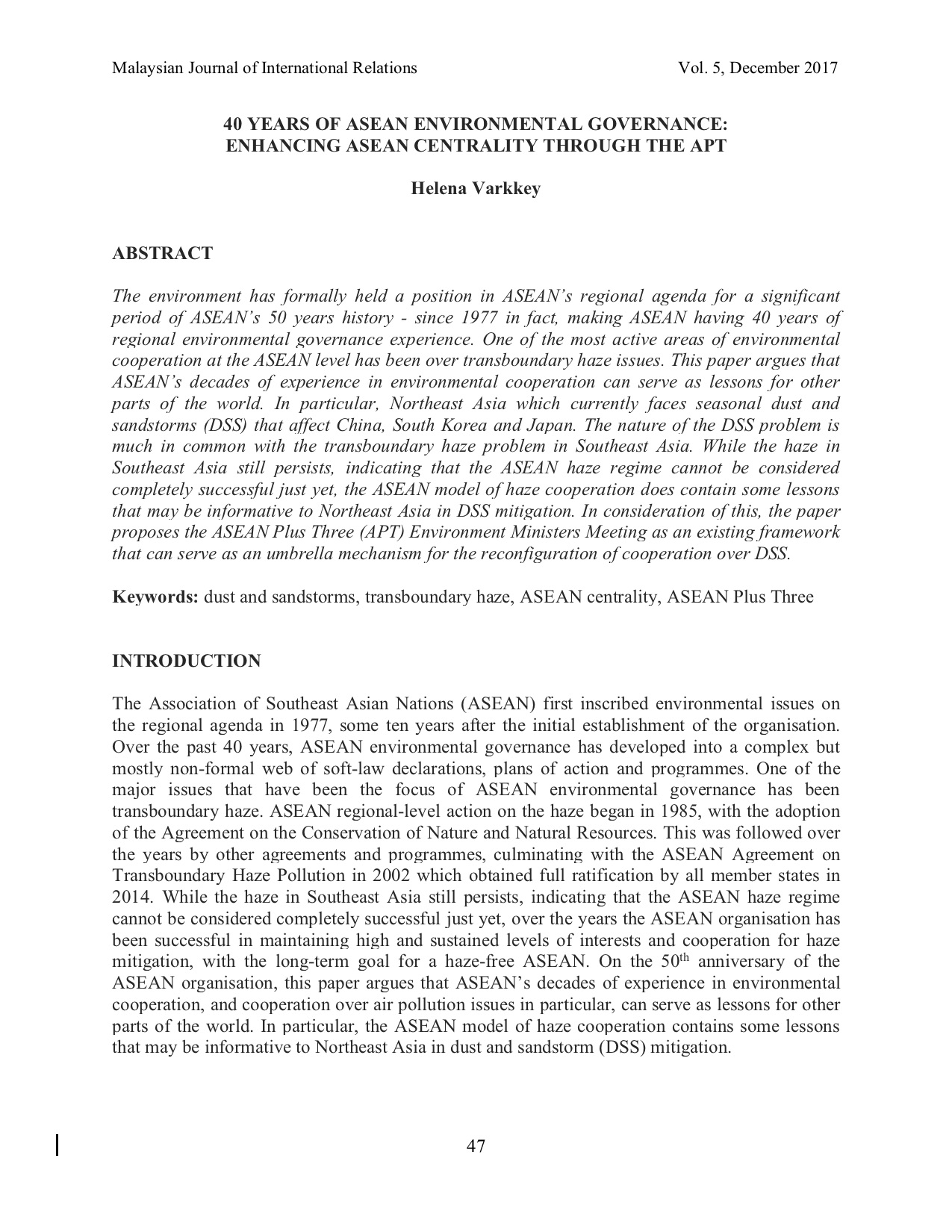40 Years of ASEAN Environmental Governance: Enhancing Asean Centrality Through the ASEAN Plus Three (APT)
Main Article Content
Abstract
The environment has formally held a position in ASEAN’s regional agenda for a significant period of ASEAN’s 50 years history - since 1977 in fact, making ASEAN having 40 years of regional environmental governance experience. One of the most active areas of environmental cooperation at the ASEAN level has been over transboundary haze issues. This paper argues that ASEAN’s decades of experience in environmental cooperation can serve as lessons for other parts of the world. In particular, Northeast Asia which currently faces seasonal dust and sandstorms (DSS) that affect China, South Korea and Japan. The nature of the DSS problem is much in common with the transboundary haze problem in Southeast Asia. While the haze in Southeast Asia still persists, indicating that the ASEAN haze regime cannot be considered completely successful just yet, the ASEAN model of haze cooperation does contain some lessons that may be informative to Northeast Asia in DSS mitigation. In consideration of this, the paper proposes the ASEAN Plus Three (APT) Environment Ministers Meeting as an existing framework that can serve as an umbrella mechanism for the reconfiguration of cooperation over DSS.
